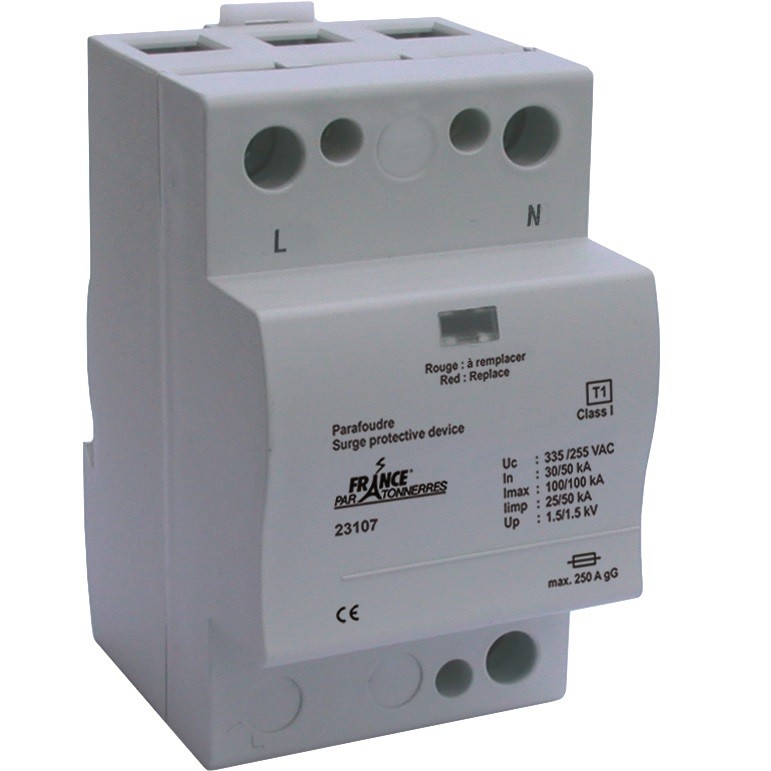A surge protector is an electronical protection apparatus, acting like a variable impedance, depending on the tension at its poles :
In normal functioning (no lightning impact), the SPD is acting like an opened circuit for the rest of the installation.
At the time of a lightning impact, the SPD becomes a passing element (closed circuit) (important and quick rise of the voltage). The SPD is acting dually: making the overcurrent flow and limiting the overvoltage.

The SPDS are classified as follow :
- Type 1 SPD (named equipotentiality SPD) must be placed in the main electrical panel, entering in the installation. It can deviate the direct energy of a lightning impact. It enables to flow the return current spreading from the earthing conductor until network conductors. The type 1 SPDs have a 10/350 µs wave. The NF C 15-100 standard (ed. 2002) makes compulsory the type 1 SPDs in lightning protection installations.
- Type 2 SPDs is the main protection for all electrical low voltage installations. Installed in each electrical panel, it avoids the overvoltages in electrical installations and protects the receivers. The type 2 SPDs have a 8/20 µs wave.
- Type 3 SPDs have a low flow capacity. So it is compulsory to install it as a complement of type 2 SPDs, near sensitive receivers. Type 3 SPDs have a combination of 1.2/50 µs voltage wave and 8/20 µs current wave.
Discover our surge arresters
